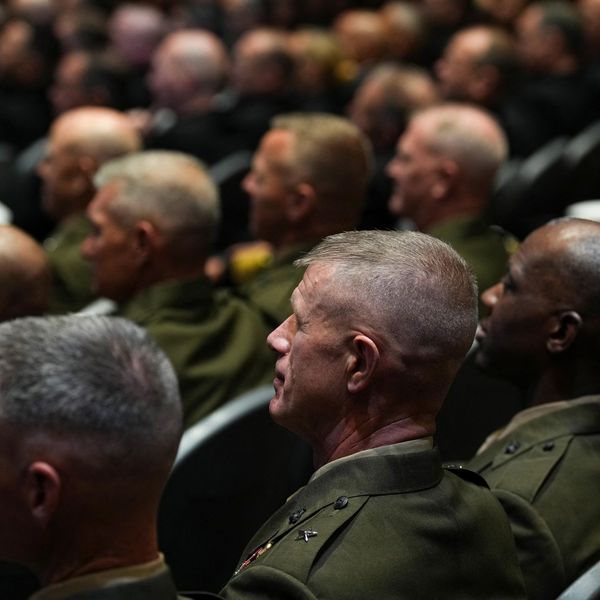President Donald Trump and his administration came into office promising to stop “endless wars” in the Middle East. But like his predecessors, the president has found himself walking back this important strategic objective. Why? Because he seems to believe the best option for the United States in the Middle East comes down to pain and loss no matter which policy we choose: military withdrawal or continued forward deployment. In choosing the shorter horn of this dilemma, there are two important points to consider.
First, if you think about it, the United States’ primary foreign policy after World War II was to prevent World War III; and given political scientists’ analyses of the causes of WWII, that meant a combination of focus on military forward deployment (in Europe and Japan in particular), and economic stability (no trade wars, and broad investment in global recovery and development in which the United States would bear a disproportionate share of the burden). So in an important sense, “forward deployment” — keeping large numbers of U.S. armed forces stationed abroad — became an unquestioned pillar of U.S. grand strategy and national security. Forward deployment dovetails with what historian and Quincy Institute President Andrew Bacevich, among others, has rightly identified as “American exceptionalism.” But its success depended critically on an adherence to key pillars of U.S. legitimacy: the rule of law, multilateralism, and the use of force as a last resort.
Our research on U.S. military interventions at the Center for Strategic Studies has made it clear that this reliance on the use of force as a last resort, and with it, our legitimacy, have vanished. Now even our allies have come to view America as a bully.
This deeply troubling trend is only partly a consequence of the increased pace of U.S. armed deployments abroad (which continue to rise). It is due to the increasing lawlessness and unilateralism which underpins more recent U.S. military interventions. For example, the U.S. assault on Saddam Hussein’s Iraq in 2003 was in violation of international law; as was the U.S. drone strike which assassinated Iranian General Qassem Soleimani.
Second, a combination of American exceptionalism and its overwhelming military pre-eminence has led to an increasing tendency to use force first, and unilaterally. Just consider that one-quarter of all U.S. interventions since the country’s founding over 200 years ago have happened in the last two decades. This is in large measure a result of hawkish and ignorant characterizations of “Islam” as a violent religion following 9/11. President George W. Bush responded by shifting long-standing U.S. practice of diplomatic, economic, and military action to anchor U.S. national security, to the use of military action alone without allied support. The Department of Defense expanded, while the Department of State withered, giving rise to what I have called kinetic diplomacy.
Keep in mind that the original justification for permanently stationing large numbers of U.S. armed forces abroad was to protect our former enemies from conquest by the other victor of WWII: the Soviet Union. But as a long-term strategy it suffered from a serious defect: assuming that nations (e.g. French and Germans) would always be hostile to one another, U.S. military occupation became institutionalized. This had the effect of preventing security self-reliance: as NATO’s first Secretary General Lord Ismay put it, the Atlantic Alliance’s key value would be “to keep the Russians out, the Americans in, and the Germans down.”
This historical context largely explains President Trump’s current dilemma, one that has afflicted each of his predecessors going back to Harry S. Truman: if we stay in the Middle East, we cannot win. Yet if we go, the peoples we came to help will suffer certain abuse; and we leave vast territories open to the recovery and expansion of brutal groups such as ISIS. But which is the shorter horn? Leaving will indeed be costly in the short term, but long-term remains the only option for increasing U.S. national security.
If the U.S. leaves Afghanistan and Iraq militarily, bad things will happen. ISIS will recover and expand, at least initially; and about this we should suffer no illusions. But Americans should remember that we are not the only ones with an interest in defeating ISIS. The coalition in Syria worked precisely because everyone agreed that defeating ISIS was critical. We are also not the only ones capable of defeating ISIS. We have become a nation that does too much work for those we hope to aid, and in doing so, we inadvertently prevent them from gaining the capacity to do the work themselves. We did this in Vietnam and Iraq and we’re still doing it in Afghanistan. In addition, the trillions we wasted in our well-intentioned efforts to help oppressed peoples in Afghanistan and Iraq have not only resulted in sustained and profound underinvestment in American education and infrastructure, but have presented our real adversary, the Peoples Republic of China, an historically unprecedented opportunity to supplant us as a world leader; with ominous consequences.
Painful as it is, our best strategy is to leave the Middle East — especially Iraq — and allow its states to rebuild their own capacity to defeat groups like ISIS. That capacity may not result in governments which are democratic or respect the rule of law. But then the United States itself has not proven exemplary in either regard in the past two decades, and this lack of U.S. legitimacy further weakens arguments for either staying deployed abroad, or intervening militarily in others’ affairs. Recent history reveals we are incapable of defeating insurgencies and restoring stability.
Leaving militarily does not mean leaving all together. The United States should continue to pursue its Middle East interests diplomatically and economically. It may be that the real defect with our engagement in the Middle East in the decades since 9/11 is that it has been too ignorant and too blunt. Recall that President Bush’s pick to lead Iraqi reconstruction in 2003 was L. Paul Bremmer III: a man with little diplomatic experience, and little knowledge of the history and politics of the Middle East. If the U.S. returned to leading with diplomacy, either the use of armed force would be unnecessary, or, because we would know whom to target and with what mix of military assets, our resort to armed force would be much more effective. Rebuilding the State Department and returning to the use of force as a last resort will also have the critical effect of restoring our legitimacy at home and abroad. That’s why as painful as it will be in the short term, withdrawing our armed forces from the Middle East is the shorter horn in this difficult national security dilemma.
















